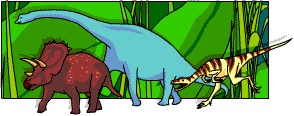Running with Scissors
Created | Updated Apr 9, 2003

One of the unintended consequences of our gadding about the globe is that some enterprising diseases have begun to gad about the globe with us. Grouped under the term 'emerging infectious diseases', they can be either viral or bacterial, they spread in a variety of ways, and they can infect animals as well as people. They're versatile little stinkers, and while you may admire their inventiveness and tenacity, you don't gotta like 'em much.
You do gotta, it appears, learn to live with 'em. One of the diseases, West Nile Virus, rolled into my part of the world about a year ago. As the name indicates, this virus originated in Africa. Folks theorize that it hitched a ride in a mosquito that stowed away on a cargo ship bound for North America. Once here, the virus found a continent full of new hosts and proceeded to wear out its welcome.
Silent Spring
West Nile Virus spreads via infected mosquitoes that pass the virus to horses, birds, and humans. It is often fatal to birds and horses and occasionally fatal to humans, particularly those with impaired immune systems. Most people who are infected with the West Nile Virus
do not get sick. About one fifth of the people who do become infected will develop West Nile fever, with mild symptoms such as fever, headache, and body aches. About 1 in 150 will develop the more severe West Nile encephalitis or meningitis and need immediate medical care; their symptoms include severe headache, high fever, neck stiffness, stupor, disorientation, coma, tremors, convulsions, muscle weakness, and paralysis.
The disease is particularly nasty to crows, jays and ravens, killing a large percentage of its victims. In fact, health officials track deaths among these birds to determine the spread of the virus. At this time there is a vaccine for horses but none for birds or humans. Typically the virus hits hard when it first moves into an area, but as it becomes established within a population, it seems to wreak less havoc, as the population has either been exposed to it or is
immune.
We're having a quieter than normal spring right now. There are noticeably fewer birds this year, although the ones that are here are going about their business for all they're worth. There have been fewer territorial squabbles among the males, and the dawn chorus that I've always used in place of an alarm clock for my wake-up call isn't noisy enough to wake me reliably. I'm still hauling food out to the feeders in the back yard. We had a fairly hard winter in these parts which followed a drought- and virus-plagued summer, so the birds need all the help they can get. The world would be a poorer place without them, since they're all we have left of the dinosaurs.
Why Is the Budgie Looking at Me That Way?
It seems that theories on bird evolution change as often as birds moult their feathers. Recent fossil evidence out of China suggests that feathers evolved before birds did and that a number of theropod dinosaurs were feathered.1 In fact, the latest find is a dinosaur with asymmetrical feathers, the only kind of feather useful for flight. This suggests that both feathers and flight evolved before birds did.
All of which makes you rethink your definition of birds. Scientists now say that birds are a group of dinosaurs that are capable of powered flight, as opposed to gliding or just jumping out of trees and hoping for the best.
A few years back one theory held that birds had evolved from the feathered raptors - think Velociraptor, the menacing and clever 'star' of the movie Jurassic Park - but this theory is now pretty much discounted. The raptors are now considered cousins rather than the ancestors of modern birds. This is probably a good thing: no need to worry if the budgie starts eyeing you speculatively.
dinosaurs with large jaws and short forelimbs and walked on two legs. For more information, take a look at Walking with
Dinosaurs and Feathered Dinosaurs of China. The second link features some drawings of what the feathered Dinos may have looked like.
